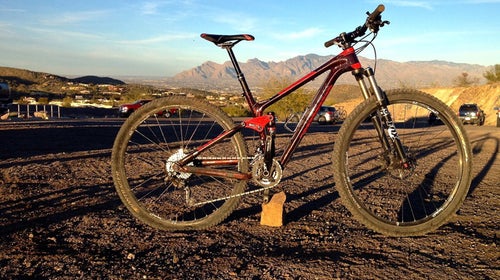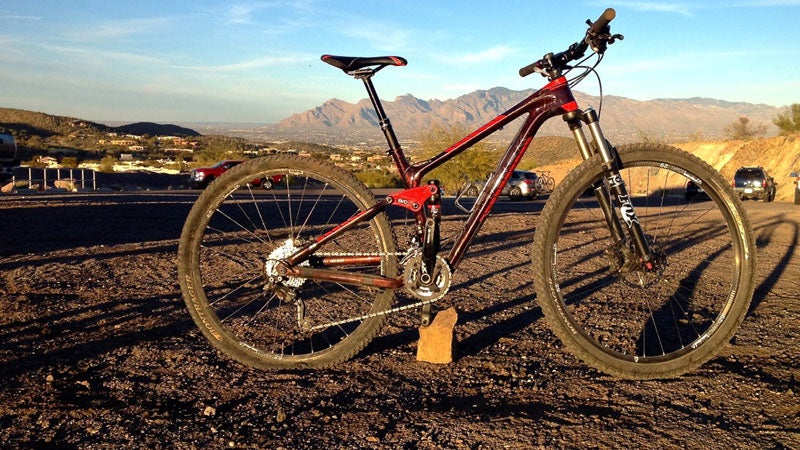Not long ago, Trek had few鈥攊f any鈥攎ountain bikes that excited us. The designs were aging, the aesthetics were dated, and the performance on many of the bikes was just meh! Someone in Waterloo must have taken note because in the last three to four years, the company has been slowly and quietly making over its mountain bike line.
The push has been so successful that today, there aren鈥檛 many bikes in Trek鈥檚 mountain line that we wouldn鈥檛 be happy to own. The is one of the fastest and lightest XC machines out there, the Stache is a heap of affordable fun, the Session has some serious palmares to its name, and the both the Remedy and the Slash have been transformed into an excellent enduro machines in both 27.5 and 29.
So our expectations were high when we found out Trek had reinvented its best-selling model, the trail-oriented Fuel EX, around 29-inch wheels. We are testing the , a 120mm full alloy frame spec鈥檇 with XT components for $5,250. The bike can be had for as much as $8,100 for the EX 9.9 version in carbon and as little as $1,980 for the Fuel EX 5, though the EX 7 at $2,630 is probably the least expensive option that鈥檚 a close parallel to what we鈥檙e riding given its inclusion of Trek鈥檚 DRCV rear shock. The EX 9.8 also comes in a slightly more expensive ($5,770) SRAM XO1 1×11 configuration, but honestly for a trail bike like this we feel the 2×10 drivetrain is a more versatile, better choice.聽
Options aside, it鈥檚 the Fuel EX鈥檚 composed trail manners and refined ride feel that has impressed us most about this 29er remake. It鈥檚 so well balanced and the geometry so dialed that we never thought about the wheel size鈥攊t just feels like the right measurements for a trail ride. The DRCV rear shock, which adds a second chamber to the Fox Float suspension, works just as the company says it does, with the split-chamber design providing both supple small-bump compliance and plush big-hit feel on rougher trails.
The head tube angle is a comfortable 69.5 degrees, though thanks to Trek鈥檚 offset fork, which pushes the crown of the fork forward, the hand position back, and reduces the trail of the bike, the handling is crisp and quick. At 27.2 pounds for our size medium, which includes a dropper post, it鈥檚 a bike that feels sprightly enough to keep up with the XC crowd but still big enough to take on most trails.
In addition to its mountain bikes, Trek has done a hell of a job overhauling their mountain tire line-up in the last years, too. The entire Bontrager XR line-up is excellent, and I鈥檝e been running XR1s for races, XR3s for all-around fast riding, and XR4s for chunkier stuff. Having said that, it鈥檚 too bad that Trek opted to spec the Fuel EX with XR3s鈥攁 decision I assume is based on making the bike as lightweight as possible on showroom floors鈥攂ecause the XR4 is much more rugged and expands the bike鈥檚 range and handling.
One final thought: As good as the Fuel EX is, the Bontrager wheels are its Achilles heel, as is the case across the mountain line. We hope the company will soon invest the same energy into its mountain wheels as it has into revamping its bike and tire offerings.


